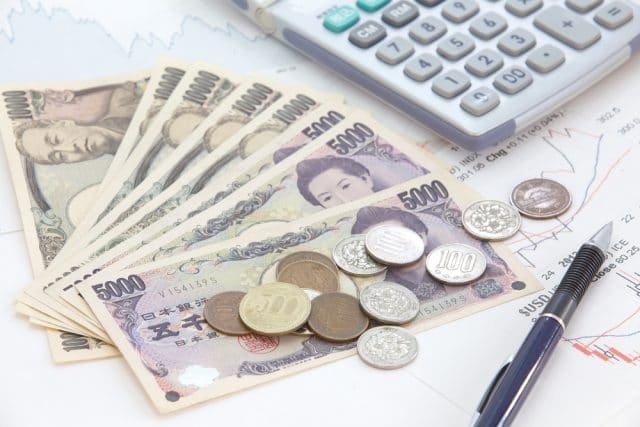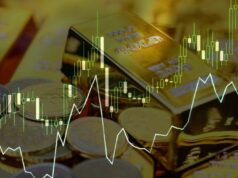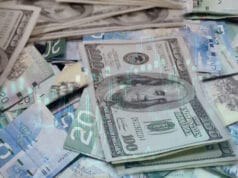- The Australian dollar has declined against major and minor currencies.
- Investors fear a burst in Australia’s housing bubble.
- Tesla records a 1,300% YoY rise in Model 3 Japan sales.
The AUD/JPY price change on April 9, 2021, was -0.13% from the previous day trading after it opened lower at a low of 83.481 headed towards 83.568. The yen traded higher than the Australian dollar as Japan stocks gained on April 7, 2021. Stocks were up due to higher Nikkei 500 indices on real estate (+1.42%) and pulp and paper (+1.30%).
The Nikkei 225 opened +0.40% higher on April 9, 2021, at 29,886.00 after closing at 29,708.98 on the previous day trading. A forecast from IMF analysts indicates that the Australian economy will grow at a rate of 4.5%, with unemployment slowing 6% in 2021. However, this economy is expected to reduce by 2.8% and unemployment to +5.5% in 2022.

Australian GDP growth against Inflation
Housing prices boom
The Reserve Bank of Australia (RBA) kept interest rates at a low of 0.1%, cementing the boom in housing prices since the beginning of 2021. The RBA warned of the market’s overheating due to risky lending with strong credit demand from first-home buyers. March 2021 saw the highest monthly home value increase since 1988 as the index soared to 2.8%.
Housing in the city of Sydney had the highest surge at 3.7% in the month. The RBA maintained that the cash rate would continue at 0.1% until the containment of inflation between 2 to 3%. The fall of the Australian dollar continued against other major and minor currencies.
Australia’s economic health
The AUD/GBP was -0.06%, AUD/CHF -0.11% and AUD/EUR at -0.15%. In terms of COVID-19-related debts, Australia leads among the global developed nations with a $590 billion spike. The debt is expected to rise until 2022, before the economy returns to stability.
Australian bond yields increased towards Q2 2021 due to the US stimulus plans as well as vaccine distribution around the globe. With the lending rates are record lows, the 3-year government bond rose towards the RBA’s board target of 10 basis points. Expectations are rife that inflation rates will near the central bank’s target before 2022.
Australia secured a deal to purchase an additional 20 million Pfizer vaccine dosage in 2021. The deal will see Australia’s vaccine bracket reach 40 million in the year to inoculate its population of about 26 million people.
Australia-Japan trade relations
As of 2019, Japan-Australia trade relations reached $88.5 billion making Japan, Australia’s second-largest trading partner after China. Japanese imports from Australia lowered to $35 billion in 2020 due to the impact of the Covid19 pandemic.
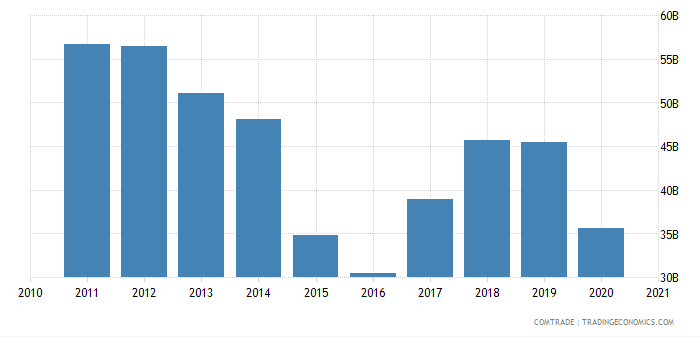
Japan imports from Australia since 2010
February 2021 saw Japan’s GDP decrease by 1.2% due to diminished exports to China and the contraction in the US economy.
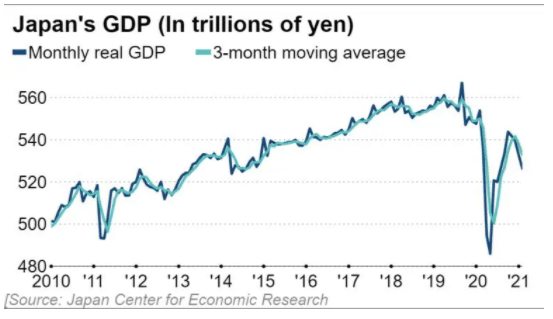
Slow Japan GDP growth
Seasonally-adjusted GDP decreased to 526.35 trillion yen ($4.78 trillion) partly due to low exports and skepticism among investors on Japan’s economic recovery. However, electric vehicle giant Tesla noted an increase in EV sales in March 2021 by 1,300% YoY. A surge in Model 3 auto orders in Japan from 44 units in March 2020 to 588 units in March 2021 increased Tesla’s market popularity. The strong sales were attributed to government subsidies on electric cars.
Technical analysis

AUD/JPY
The AUD/JPY trading pair has an arc formation from mid-Q1 2021 to April 2021. The price movement shows a downtrend towards 82.267 and essential support at 81.901. If the price breaks the 81.901 barrier, then we may see a continual decrease in Q2 2021. There is an increase in volume showing the price may find resistance at 82.000. There is slow buying activity among traders, with the 14-day RSI at 48.63.
